Palm Leaf Plates: The Eco-friendly Diningware
In an era where environmental consciousness is at the forefront of consumer decision-making, the catering industry faces a growing demand for sustainable alternatives to traditional single-use plastics and styrofoam.
Among the innovative solutions gaining traction, palm leaf plates emerge as a shining example of eco-friendly diningware, seamlessly blending functionality with environmental stewardship. From indoor banquets to outdoor events, these biodegradable plates offer a compelling case for sustainable choices in catering practices.
Table of Contents:
Advantages of The Palm Leaf Plates:
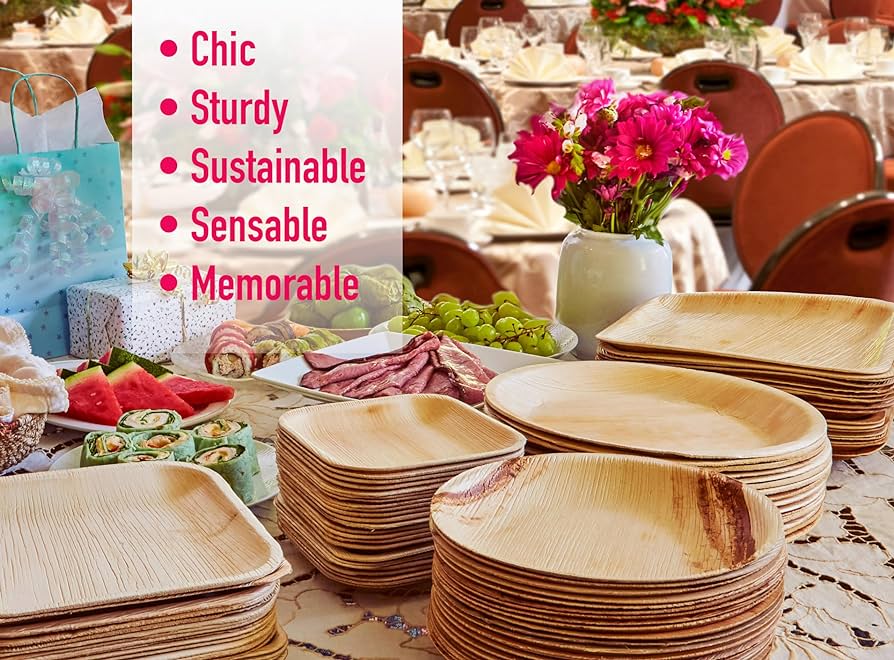
- Palm leaf plates are crafted from fallen leaves of the Areca palm tree, a species native to tropical regions such as India, Southeast Asia, and Africa.
- Harvested without harming the trees, these leaves undergo a simple and chemical-free process of cleaning, heat-pressing, and shaping into elegant, sturdy plates.
- The resulting products retain the natural texture and color of the palm leaf, imbuing each plate with a unique and rustic charm.
The Manufacturing Process:
Manufacturing palm leaf plates involves a series of steps that transform raw palm leaves into durable, eco-friendly diningware. This process typically involves traditional techniques and minimal machinery, ensuring a sustainable and environmentally friendly production method.
Here’s an overview of the manufacturing process:
1. Harvesting Palm Leaves:
- The manufacturing process begins with the collection of fallen palm leaves from the Areca palm tree.
- These trees shed their leaves naturally, providing a sustainable source of raw material for plate production.
- Harvesters carefully gather the leaves without damaging the trees, ensuring the sustainability of the ecosystem.
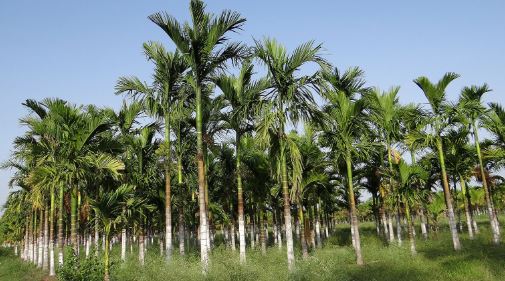
2. Cleaning and Sterilization:

- Once collected, the palm leaves undergo a thorough cleaning process to remove any dirt, debris, or impurities.
- This step may involve rinsing the leaves with water or gently brushing them to ensure cleanliness.
- Following cleaning, the leaves are sterilized using heat or steam to eliminate bacteria and pathogens, ensuring food safety.
3. Shaping and Pressing:
- After sterilization, the cleaned palm leaves are pressed into the desired plate shape.
- This is typically achieved using heated molds or hydraulic presses that apply pressure to the leaves, shaping them into round or oval plates.
- The pressing process may also involve trimming the edges of the plates to achieve a uniform shape and size.
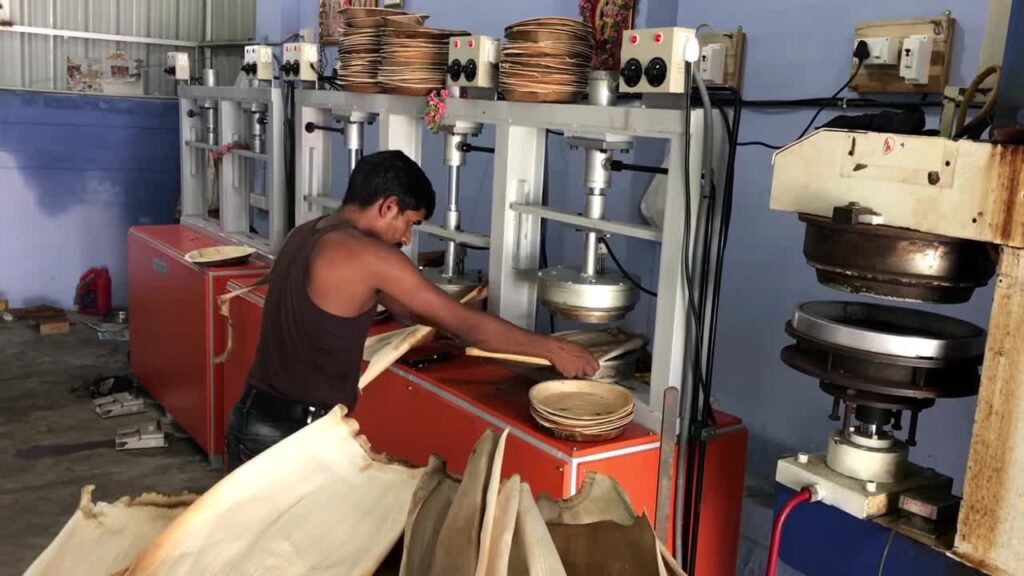
4. Drying:

- Once shaped, the palm leaf plates are left to dry naturally in the sun or using low-heat drying methods.
- This step helps remove excess moisture from the plates, ensuring durability and preventing mold or mildew growth.
- Proper drying also enhances the strength and stability of the plates, making them suitable for use with hot or cold foods.
5. Quality Control:
- Throughout the manufacturing process, quality control measures are implemented to ensure that the palm leaf plates meet the required standards.
- Inspectors carefully examine the plates for any defects, irregularities, or imperfections, rejecting any items that do not meet the quality criteria.
- This rigorous quality control process ensures that only high-quality, defect-free plates reach the market.
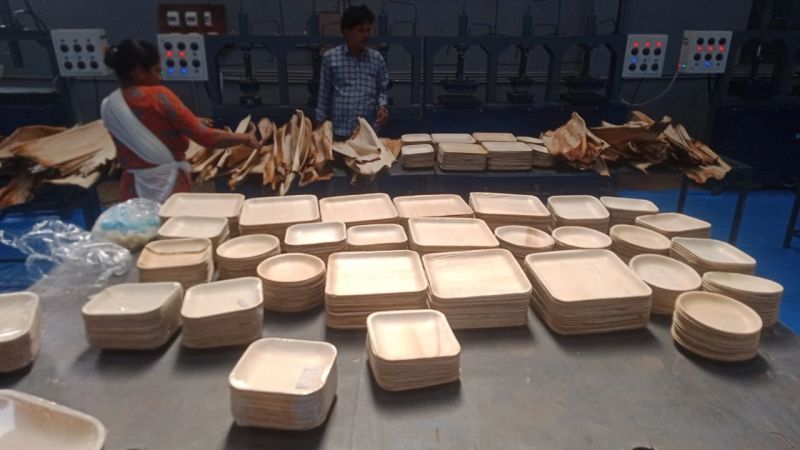
6. Packaging and Distribution:
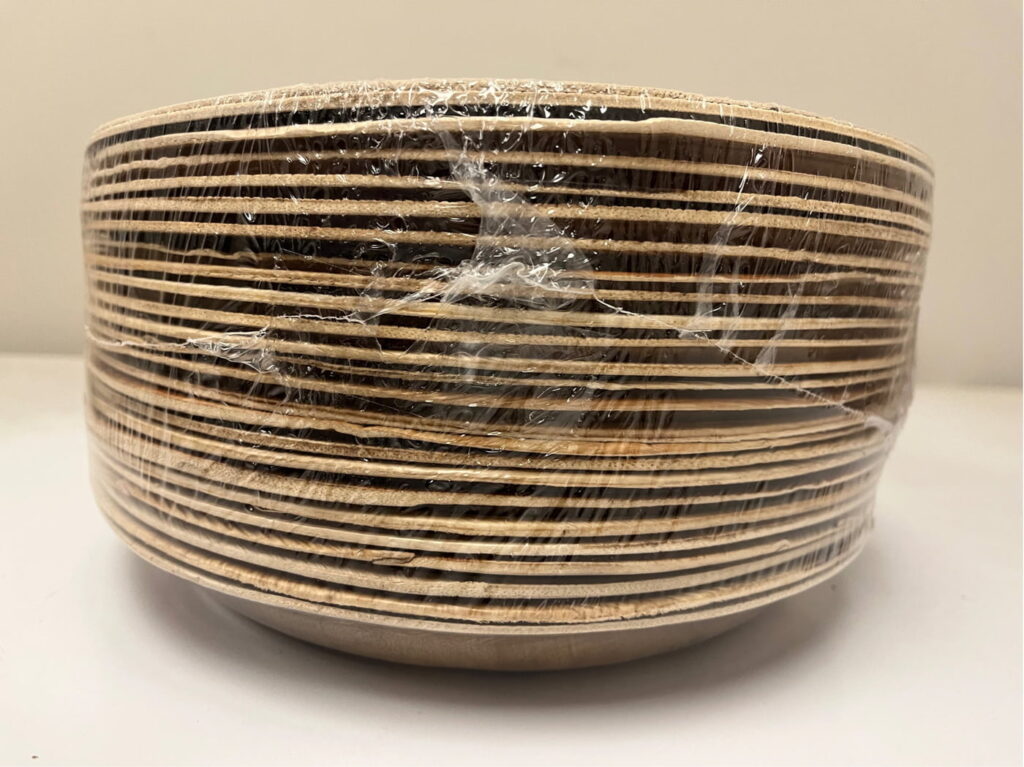
- Once manufactured and inspected, the palm leaf plates are packaged for distribution to retailers, wholesalers, and customers.
- Packaging materials are chosen to minimize environmental impact, such as biodegradable or recyclable materials.
- Efficient distribution networks ensure that palm leaf plates reach their destination in a timely manner, ready for use in various catering settings.
Sustainability in Action:
- The appeal of palm leaf plates lies not only in their aesthetic appeal but also in their impressive eco-credentials.
- Unlike conventional disposable plates made from plastic or paper, palm leaf plates are 100% biodegradable and compostable, breaking down naturally without leaving behind harmful residues or contributing to landfill waste.
- This inherent biodegradability makes them a sustainable choice for both indoor and outdoor events, reducing the environmental footprint of catering operations.
Versatility and Durability:
One of the key strengths of palm leaf plates is their versatility across a wide range of catering settings. Whether used for formal dinner parties, casual gatherings, weddings, or corporate events, these plates offer a stylish and eco-conscious alternative to traditional tableware.

Their durable construction allows them to withstand hot and cold temperatures, making them suitable for serving a variety of dishes, from appetizers and salads to main courses and desserts.
Convenience and Hygiene:
In addition to their sustainability credentials, palm leaf plates offer practical benefits that caterers and event organizers appreciate.
Their lightweight yet sturdy design makes them easy to transport and handle, streamlining logistics for both indoor and outdoor settings.
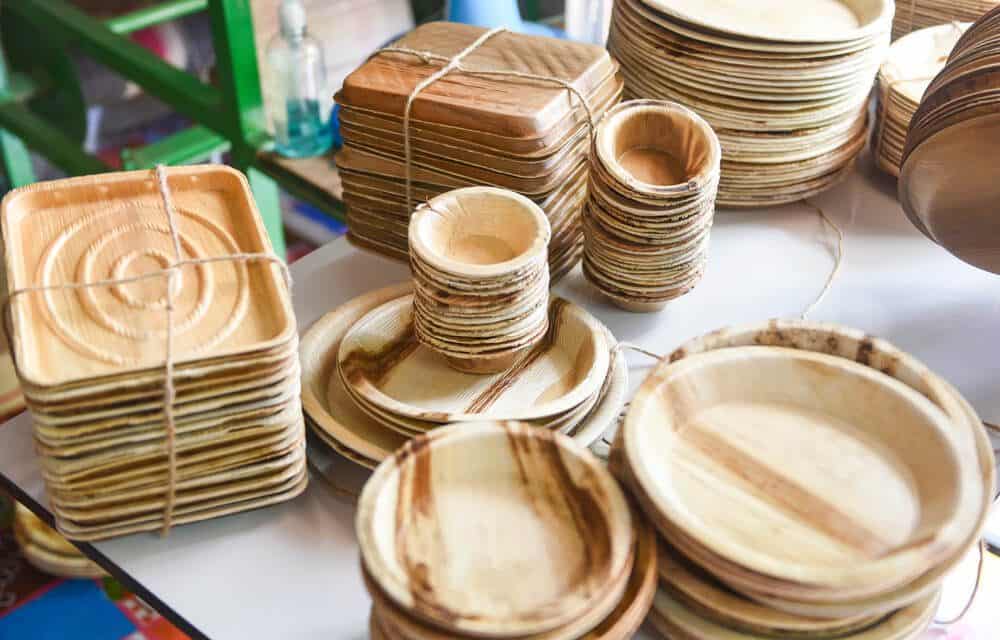
Furthermore, palm leaf plates are naturally non-toxic and chemical-free, ensuring food safety and peace of mind for diners.
Inspiring Sustainable Choices:
- By incorporating palm leaf plates into their catering operations, businesses and individuals can make a tangible impact on environmental conservation efforts.
- Beyond serving as a practical dining ware option, palm leaf plates serve as a powerful symbol of sustainability, inspiring guests to rethink their consumption habits and embrace eco-friendly alternatives.
- From reducing plastic pollution to supporting sustainable livelihoods in palm-growing regions, the adoption of palm leaf plates embodies a commitment to responsible stewardship of the planet.
Conclusion:
As the demand for sustainable catering solutions continues to rise, palm leaf plates emerge as a compelling choice for indoor or outdoor events. Their eco-friendly attributes, versatility, and aesthetic appeal make them a preferred option for conscientious consumers and businesses alike.
By embracing palm leaf plates, caterers and event organizers can not only elevate the dining experience but also contribute to a greener, more sustainable future for generations to come.
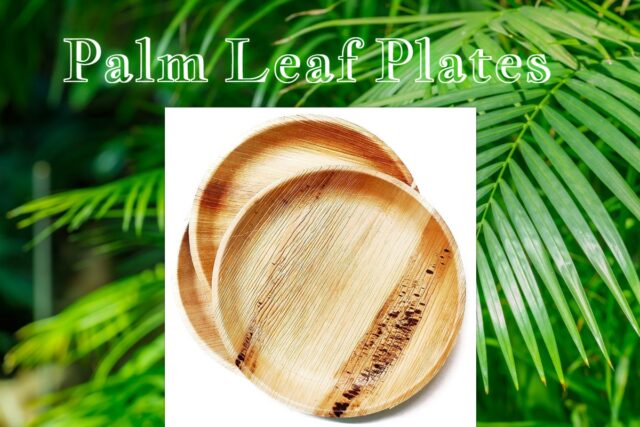


MOST COMMENTED
Animal-Based Proteins / Casein Protein / Dietary Protein / High-Protein Diets / Pea Protein / Plant-Based Proteins / Protein / Protein Deficiency / Protein Supplements / Proteins / Whey Protein / Whey Proteins
Is Protein Powder Safe for Teenagers and Children?
Animal-Based Proteins / Casein Protein / Dietary Protein / High-Protein Diets / Pea Protein / Plant-Based Proteins / Protein / Protein Deficiency / Protein Supplements / Proteins / Whey Protein / Whey Proteins
Unlock the Power of Proteins for Optimal Gut Health
Animal-Based Proteins / Casein Protein / Dietary Protein / High-Protein Diets / Pea Protein / Plant-Based Proteins / Protein / Protein Deficiency / Protein Supplements / Proteins / Whey Protein / Whey Proteins
Pea Proteins: The Best Plant-Based Protein Alternative?
Multivitamin
Total Health: Multivitamin for Active Lifestyles
Multivitamin
WellnessFusion: Complete Multivitamin Support
Dietary Supplement
Revitalize Your Health: The Magic of Red Yeast Rice Capsules
Foot care / Foot Health
Revitalize Your Foot Care Routine: Essential Tips for Optimal Foot Health
Foot Problem / Diabetics / Foot Health
Diabetics: Mastering Footwear Selection for Enhanced Foot Health and Ultimate Comfort
Exercises and Footwear Tips for Hammertoe Relief / Foot care / Foot Health / Foot Pain / Foot Problem / Hammertoes
Unlock Effective Exercises and Footwear Tips for Hammertoe Relief
Hammertoes / Foot Health / Foot Pain / Foot Problem
Unlock Relief: Essential Guide to Hammertoes Causes, Symptoms, and Treatments